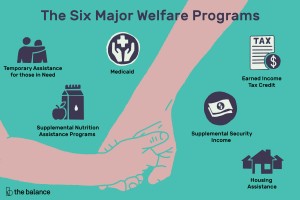Our country is in the midst of an international event that has impacted us all in some way; some more than others. Whether it is a significant change in lifestyle based on social distancing and quarantine protocols, or God forbid, you or a loved one impacted with the disease, the reaches of this virus knows no limit.

The economic impacts are striking and the pain has been felt immediately. The beginning of April was marked with a frustratingly bad statistic: 1/3 of renters in the country did not pay their rent.1,2
I read that the same way you did; but yes, it says COUNTRY and not COUNTY. There is a caveat to the striking headline: 1/3rd of renters did not pay their rent on time, that doesn’t mean that it was not paid. Regardless, the figures are staggering and tell the tale of the fate of our friends and neighbors and the general state of our fiscal wellbeing.
The fact that these many Americans are so close to the brink of homelessness that missing one or two paychecks would cause them to lose the ability to pay their rent is representative of our society as a whole. Yes, this virus is devastating our economy, but from the same vein, how are we positioned as a society to provide care for all, if so many are constantly on the brink of disaster.
This could easily turn to a discussion regarding a Universal Basic Income, or the exacerbation of an already critical point homeless and housing crisis, but I think it is necessary to understand that there is some hope, albeit fleeting.
On April 1, 2020, the Corona Aid, Relief and Economic Security (CARES) Act became effective. Known as the overall stimulus and rescue package for those impacted by the virus, whether physically or economically, this does provide protections for renters…to an extent.
The CARES provides that no evictions will take place and no late rent fees will be charged for 120 days from April 1, 2020, based solely on nonpayment of rents due to the impacts of COVID-19. This DOES NOT mean rent is not due or that evictions will not take place for not paying rent. Instead, what it means is that they will not take place during the 120 periods after April 1, 2020. Oh, and this only applies to housing either subsidized or financed by the Federal Government – either the department of Housing and Urban Development or the Internal Revenue Service by the tax credit affordable housing program.
For every other renter in California, relief has been provided by Governor Newsom.
The Governor of the State of California has issued an executive order that provides protection like that of the CARES Act. The governor has proclaimed that if a resident had
- Paid rent on time for the March 2020 payment,
- They are unable to pay their April or May rent,
- Because of verifiable and documented economic hardships associated with the COVID-19 outbreak, and
- They advise their landlord of such within seven (7) days of the rent being due, that there will be no evictions for nonpayment of rent through May 31, 2020. Many cities have enacted similar statutes.
Concisely, rent must still be paid, but if there are reasons that rent cannot be paid, then there are certain protections in place to prevent evictions from happening in the immediate future. Note, however, that there are two separate protections. The CARES Act merely prevents evictions for nonpayment of rents due to the impacts of COVID-19 being filed for a 120-day period; if rent has not been paid by the expiration of that period or a repayment agreement has not been entered with your property manager by the expiration of that period, then a thirty-day notice could be issued to terminate your tenancy. From the California law, evictions will stay for a shorter period ONLY if you meet the four specified provisions identified above.
What do we not have? We do not have a subsidy program at the local, state or federal level to supplant the lost wages associated with COVID-19 that will, in turn, protect peoples’ homes. The CARES Act does provide a stimulus to be paid to most tax filers in the country, and that may be effective to allow other individuals to pay their rent, but it won’t be enough for Californians. A stimulus check of $1,200 for an individual would hardly be enough to pay rent for a studio apartment in Ventura County. With incredibly high rents and limited housing, we need a direct payment program that both
- Stays eviction proceedings indefinitely and
- Provides payments to landlords either directly or in the form of tax credits from the State of California. Note, I am focusing on California because the rest of the country, sans a few metros, do not deal with incredibly high rent costs in the same way as California so any other relief (see the CARES Act) would be ineffective.
We need a solution and we needed it yesterday.
What can you do? If you cannot pay your rent, faith-based organizations have long been the social safety net to help renters. If you are in a situation where you cannot pay rent or your housing is unstable, please reach out to your local faith group, or other associated tenant rights groups like California Legal Rural Assistance in Oxnard, CA.
If you would like to spread the exigency of a California solution, please share the above with your local state senator or assemblyperson.
Stay healthy.
Christopher Beck





